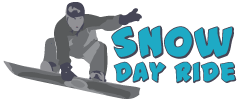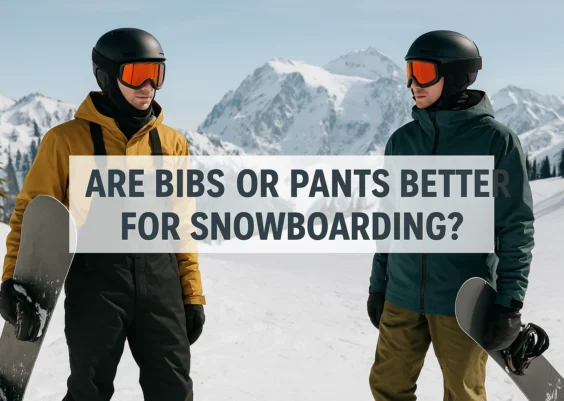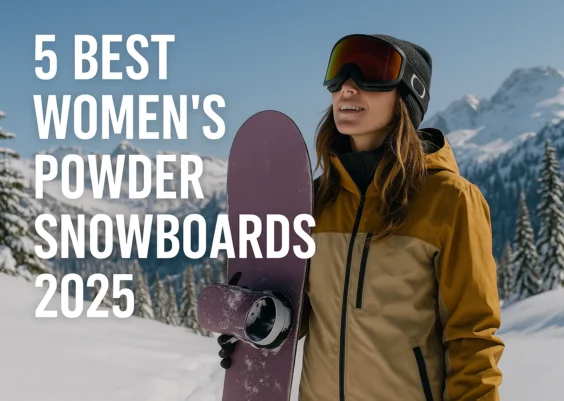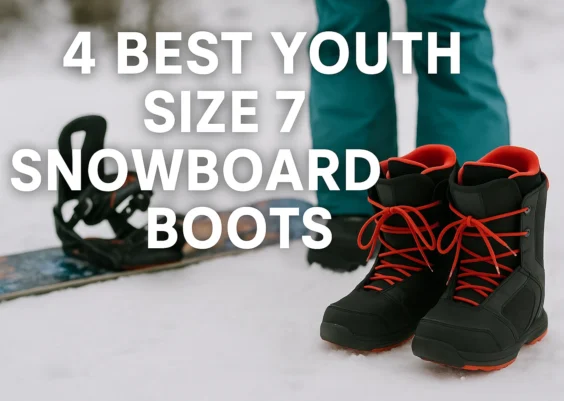Key Takeaways
- Directional twin blends freestyle and all-mountain
- Nose slightly longer than the tail
- Stance almost centered for switch riding
- Great balance of control and versatility
What is a directional twin snowboard? At first glance, it looks much like a standard twin board, but there’s a subtle design twist that changes how it rides. A directional twin is built for riders who want versatility: the freedom to carve down the mountain but also hit the park or ride switch with confidence.
It doesn’t lock you into one style, nor does it fully specialize in just one terrain. That balance is why many riders choose it. But how exactly is it different from other snowboard shapes, and is it the right fit for you? Let’s break it down.
What is a Directional Twin Snowboard?
A directional twin snowboard is a hybrid design that mixes features of a true twin and a directional board. In simple terms, the nose is slightly longer than the tail, while the stance is set almost at the center. This gives riders two key advantages: the ability to ride switch with ease and the extra stability needed for carving or floating in softer snow.
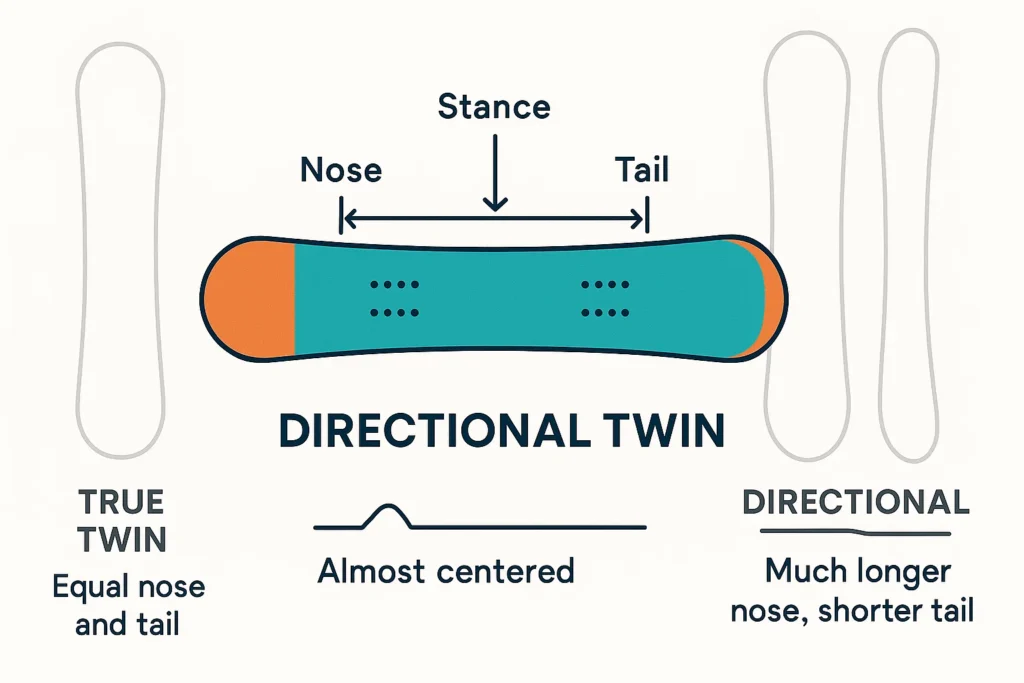
Unlike a true twin, which feels identical whether you ride regular or switch, a directional twin feels just a little more natural going forward. At the same time, it’s not as locked into one direction as a fully directional snowboard. This balance makes it popular with all-mountain riders who want one board that can handle different conditions without switching setups.
Directional Twin vs True Twin Snowboard
When choosing a snowboard, many riders get confused between true twin and directional twin. Both are versatile shapes, but they perform differently depending on how and where you ride.
A true twin snowboard is perfectly symmetrical. The nose and tail are the same length, and the stance is centered. This makes it the best choice for freestyle riders who spend most of their time in the park or riding switch.
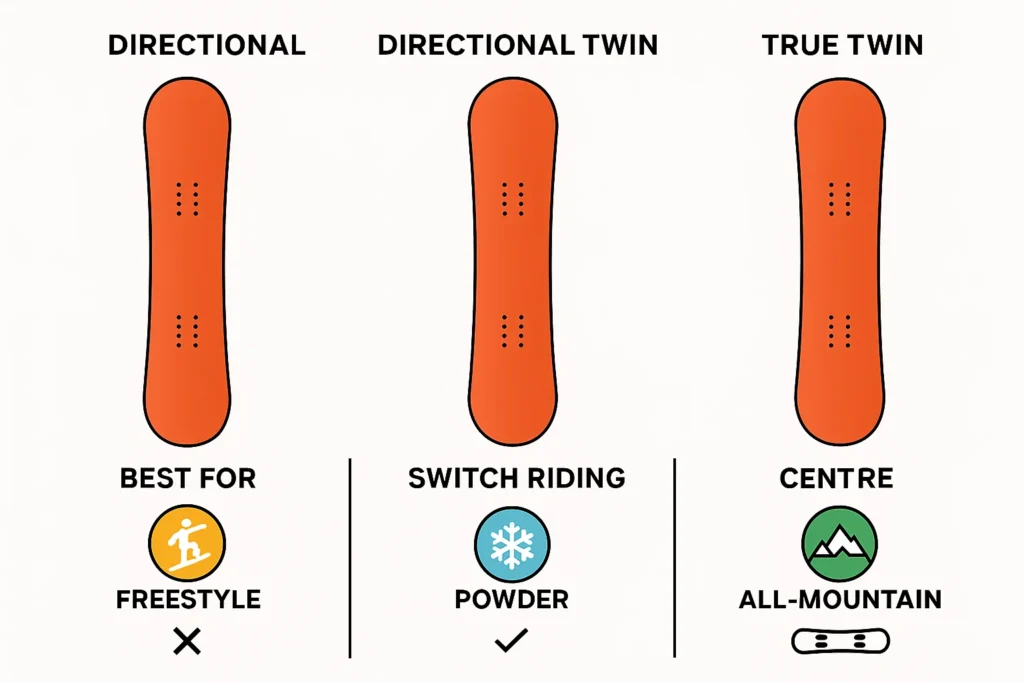
A directional twin snowboard, on the other hand, has a nose that’s slightly longer than the tail and a stance that’s close to centered but often set back just a touch. This small adjustment gives you more stability for carving, powder, and all-mountain terrain, while still keeping switch riding fairly comfortable.
Here’s a simple breakdown:
| Feature | Directional Snowboard | Directional Twin Snowboard | True Twin Snowboard |
|---|---|---|---|
| Shape | Longer nose, shorter tail | Nose slightly longer than tail | Nose and tail identical |
| Stance | Set back toward tail | Slightly set back, near centered | Centered stance |
| Best For | Powder, carving, speed | All-mountain, freestyle, some powder | Freestyle, park, riding switch |
| Switch Riding | Difficult, not ideal | Easier than directional, but not perfect | Best option for switch |
| Flex | Stiffer in tail, softer nose | Balanced, slight tail stiffness | Even flex nose to tail |
| Versatility | Great for one direction only | Balanced for both directions | Equal performance both ways |
The takeaway is simple: if you want maximum freestyle freedom, go for a true twin. If you want one board that can carve, float, and still let you ride switch, the directional twin is the smarter pick.
Pros and Cons of Directional Twin Snowboard
Like any snowboard shape, a directional twin has strengths and trade-offs. Understanding both will help you decide if it matches your riding style.
Pros
- Versatility: Handles both all-mountain and freestyle riding well.
- Switch Riding: Easier to ride switch compared to directional boards.
- Stability: Slightly longer nose provides better float in powder.
- Balanced Feel: Almost centered stance keeps it playful and responsive.
Cons
- Not Fully Symmetrical: Doesn’t feel as natural switch as a true twin.
- Jack of All Trades: Versatile but not the absolute best for park or powder.
- Setback Stance: May feel less ideal for riders who only ride park.
In short, a directional twin is about balance. It won’t outperform a true twin in the park or beat a directional board in deep powder, but it gives you the freedom to do both without switching boards.
Who Should Ride a Directional Twin?
A directional twin snowboard is made for riders who don’t want to be limited to just one style of riding. It’s not built only for the park or only for powder-it gives you a mix of both.
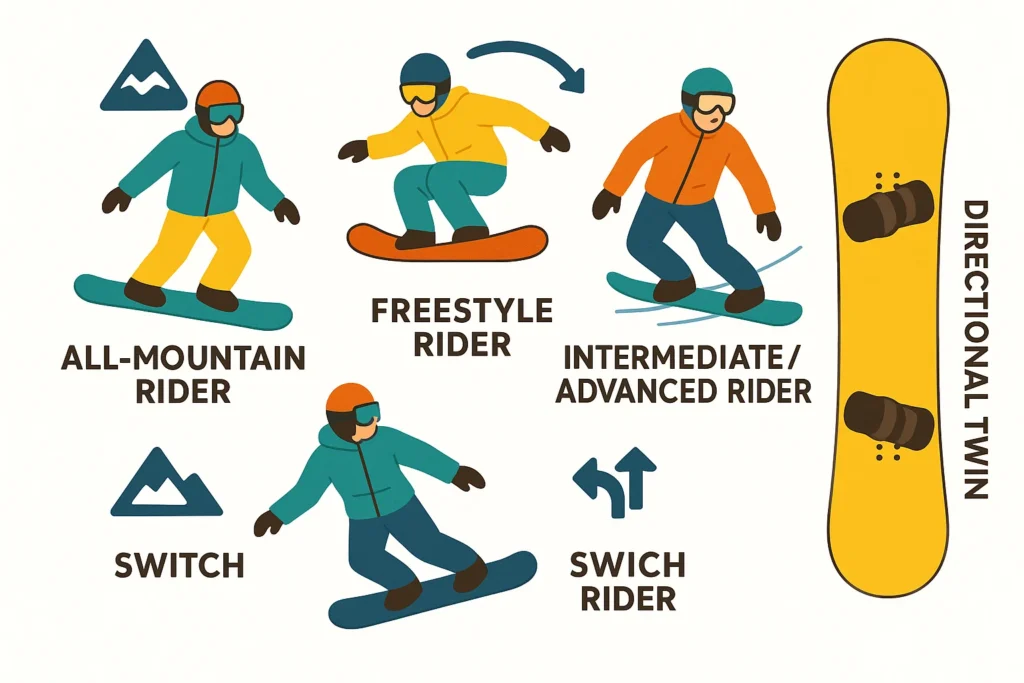
- All-Mountain Riders: Perfect for those who want one board to explore the whole mountain, from groomed runs to side hits.
- Freestyle Riders Who Roam: Great if you like hitting jumps and rails but also enjoy carving and exploring outside the park.
- Intermediate to Advanced Riders: Best for snowboarders who already know the basics and want to expand their riding.
- Switch Riders with Variety: If you like riding switch but don’t need a 100% symmetrical board, this shape works well.
In short, if you want a do-it-all snowboard that lets you carve, float, and still throw tricks, the directional twin is a smart choice.
When to Use a Directional Twin Snowboard
A directional twin snowboard shines when you want one board that adapts to different terrain. It’s not locked into a single purpose, which is why many riders choose it as their everyday setup.
- Groomed Runs: The slightly longer nose gives more stability at speed while still feeling playful.
- Powder Days: Extra nose length helps you float better than a true twin.
- Freestyle Terrain: Still capable in the park for jumps, spins, and rails.
- Switch Riding: Comfortable for riding switch, though not as perfect as a true twin.
- Mixed Conditions: Ideal if you ride in areas where conditions change quickly from hardpack to softer snow.
If you only ride in the park or only chase deep powder, other boards may suit you better. But if you want a versatile board that works most of the time, the directional twin is hard to beat.
FAQs
1. Is a directional twin snowboard good for beginners?
Yes, but only if the beginner plans to explore different terrains. A true twin may feel easier for pure park learning.
2. Can you ride switch on a directional twin snowboard?
Yes. The stance is nearly centered, making switch riding easier than on a directional board, though not as natural as a true twin.
3. What’s the main difference between a directional twin and a true twin?
A true twin is perfectly symmetrical. A directional twin has a slightly longer nose and a nearly centered stance, giving it more stability in one direction.
4. Is a directional twin good for powder?
It’s better than a true twin thanks to the longer nose, but not as strong as a fully directional board.
5. Who should avoid a directional twin snowboard?
Riders who focus only on park tricks or only on deep powder might prefer a more specialized board.
Final Thoughts
A directional twin snowboard is the middle ground between a true twin and a directional board. It offers versatility for riders who want to explore the mountain, ride switch, and still enjoy stability in powder or speed. While it’s not the absolute best for park-only or deep powder specialists, it’s the ideal choice for snowboarders who want a single board that does almost everything well. If you’re looking for balance, control, and adaptability, a directional twin snowboard could be the board that makes every run feel right.
